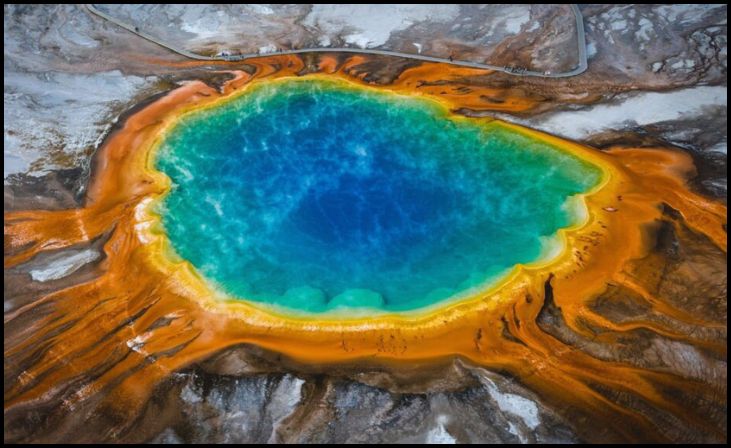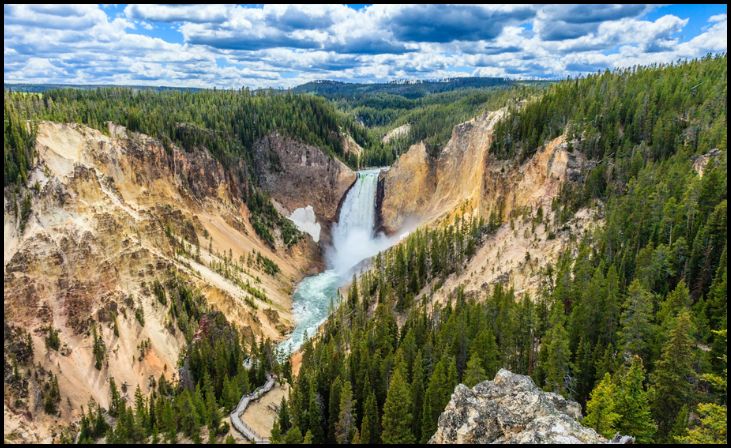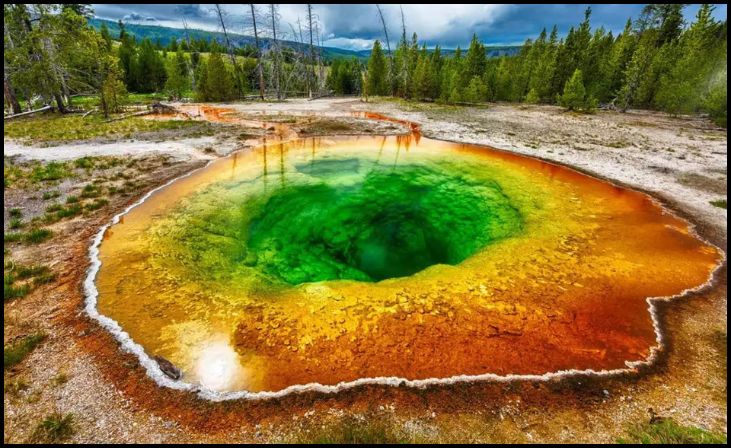Why do millions of visitors flock to Yellowstone National Park each year? It’s not just any park; it’s a symbol of natural beauty, rich history, and unparalleled adventure. As the first national park in the U.S., Yellowstone has captivated hearts worldwide. But what makes it stand out so much? Let’s explore the eight compelling reasons that make Yellowstone the most visited national park in the United States.
Yellowstone is the Oldest National Park in the USA
Yellowstone holds the prestigious title of being the first national park in the United States, established in 1872. This trailblazing status not only marks it as a historical treasure but also as the birthplace of a global conservation movement. By setting aside this vast wilderness, Yellowstone inspired the creation of national parks worldwide, emphasizing the importance of preserving natural wonders for future generations.
Yellowstone is Enormous

Covering about 2.2 million acres (or roughly 3,500 square miles), Yellowstone is one of the largest national parks in the U.S. This immense size provides endless exploration opportunities, from lush forests and expansive meadows to towering mountains and deep canyons. Whether you’re hiking, camping, or simply driving through, the park’s vastness ensures there’s always something new to discover.
Yellowstone is a Hot Spring Paradise
If you’re fascinated by geothermal wonders, Yellowstone is your ultimate destination. The park boasts more than half of the world’s hydrothermal features, with over 10,000 active hot springs, geysers, mud pots, and fumaroles. The most famous of these is Old Faithful, a geyser renowned for its predictable eruptions. Don’t miss the Grand Prismatic Spring either – its vibrant colors and enormous size make it a breathtaking sight.
Yellowstone is Full of Remarkable Wildlife
Yellowstone is a wildlife enthusiast’s dream. The park is home to a diverse array of animal species, including grizzly and black bears, bison, elk, wolves, and more. It’s one of the few places in the contiguous U.S. where you can see such a variety of wildlife in their natural habitats. Whether you’re on a guided tour or exploring on your own, the chance to observe these majestic creatures up close is unforgettable.
Yellowstone Has Hundreds of Waterfalls

Forget the old adage about not chasing waterfalls – in Yellowstone, it’s encouraged! The park features hundreds of waterfalls, each with its unique charm. The Lower Falls of the Yellowstone River, plunging 308 feet into the Grand Canyon of the Yellowstone, is particularly iconic. Other notable falls include Tower Fall and Gibbon Falls, each offering spectacular views and great hiking opportunities.
The Scenic Beauty is Unparalleled
Yellowstone’s landscapes are nothing short of breathtaking. From the lush valleys of Lamar and Hayden to the striking peaks of the Absaroka Range, the park’s scenic beauty is diverse and stunning. In the winter, snow blankets the ground, creating a serene, almost otherworldly landscape. Spring brings wildflowers and awakening wildlife, summer offers endless outdoor activities, and fall showcases vibrant foliage. Every season in Yellowstone has its unique allure.
Yellowstone Has a Rich Cultural Heritage
Beyond its natural wonders, Yellowstone is rich in cultural history. The park has been home to Indigenous peoples for thousands of years, and their heritage is deeply intertwined with the landscape. Sites like the Obsidian Cliff and Sheepeater Cliff bear witness to the historical significance of the area. Visitors can also explore Fort Yellowstone, a reminder of the early efforts to protect and manage the park.
Yellowstone is a World-Class Act in Conservation

Yellowstone isn’t just about preserving its stunning landscapes and diverse wildlife; it’s also a leader in conservation efforts. The park continually works to strengthen its ecosystems and protect its inhabitants. Initiatives like the reintroduction of wolves have had profound impacts on the ecological balance. Yellowstone also collaborates with Indigenous communities and environmental organizations to ensure that its natural and cultural resources are preserved for future generations.

